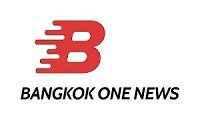Jumbo planes are returning due to high demand for first and business classes.
Due to their abundance of premium seats, the fuel-inefficient 747 and A380 are given a second opportunity to fly.

Airlines are scrambling to supply adequate capacity, or to put enough seats in the sky, as global air traffic has roared back from its pandemic-induced downturn, especially for premium tickets on foreign flights that are experiencing a stronger-than-expected recovery.
Some airlines are experiencing an unexpected bottleneck as a result of the surge because many of their newer models of aircraft, which are equipped with enough business and first class berths, are either being delivered late (especially the much-delayed Boeing 777-9) or are still awaiting regulatory approval.
The four-engine dinosaur, a historic plane model that appeared doomed to the scrap heap even before the Covid-19 epidemic, has thus been forced to make a comeback by carriers.
Prior to the busiest northern summer travel period, Lufthansa is already bringing back ten of its Airbus A340 aircraft, some of which are nearly two decades old.
Five aircraft, all based in Munich, started flying again in the middle of 2022, and Lufthansa predicted they would be retired — or reretired — by the middle of this year.
Instead, they will be joined by an additional five A340s at the Star Alliance member’s Frankfurt hub to increase the number of premium berths available.
The lucrative first-class berths, which can sell for more than US$7,000 and have seen increased demand from rich travellers, were determined by Lufthansa to be lacking in adequate numbers in its present fleet.
The 297 seats on the upcoming A340-600 include eight in first, matching the number on the A380, 44 in business, and 32 in premium economy.

Although first class is also available on Lufthansa A380s, the airline’s most recent planning envisions bringing back just three of those double-deckers.
The class is also offered by the airline’s Boeing 747-8s, as well as a fresh batch of Airbus A350-900s, though deliveries aren’t scheduled to begin until later this year.
Thai Airways is currently considering bringing back the Airbus A380 in 2024 after declaring in 2021 that it will gradually phase out its entire Airbus A380 and Boeing 747 fleet.
In an effort to restart flights more swiftly in the face of strong demand, the carrier decided to bring back nearly half a dozen other aircraft that were initially placed up for sale – three Airbus A330s and two Boeing 777-200ERs – from early this year.
The market is changing, so it’s not as simple to lease new or used wide-body or narrow-body aircraft anymore, Thai Airways Chairman Piyasvasti Amranand said in November. Other carriers excitedly reactivating their grounded A380s include Qantas, Etihad Airways, Korean Air Lines, Qatar Airways, and Singapore Airlines.
Six of the twelve A380 double-deckers that Qantas parked in the California desert during the height of the pandemic because they wouldn’t be needed for at least three years are being brought back by the airline.

In the meantime, Emirates is hard at work updating 67 older A380s with brand-new cabins and premium economy portions.
In anticipation of new aircraft deliveries to replace that capacity with smaller, more maneuverable aircraft suitable for point-to-point services, airlines used the pandemic to phase out large, four-engine jets, according to Anne Correa, senior vice president for forecasting and modeling at MBA Aviation.
Since they could go more directly over oceans or mountain ranges than their smaller brothers, four-engine aircraft have long dominated transcontinental flight pathways.
Modern twin-engine widebodies, first the Boeing 777 and later the 787 Dreamliner and Airbus’s A350, can fly the same routes while using less fuel, and because they are simpler to operate and can carry fewer passengers, they can turn around more rapidly at smaller airports.
A benefit for airlines trying to rebuild their workforces after laying off thousands of workers during the pandemic is the ability to boost capacity without increasing frequencies when operating the largest jets.
Furthermore, filling up the front of the plane is more profitable than relying on coach passengers, many of whom are upgrading to take advantage of the premium amenities, such as quick boarding and a glass of Champagne.
The amount of leisure passengers switching to business class, according to American Express Global Business Travel, has increased prices on some routes, particularly on significant transatlantic lines like New York to Paris or New York to London.
Jeremy Quek, lead global air practice consultant at Amex GBT, predicts that some of this will still be present in 2023, especially on routes with a significant leisure component, until capacity truly catches up with demand.
Airlines are feeling the pressure as more passengers crowd the front of the plane due to delayed supplies. Widebody capacity is especially scarce for Lufthansa.
It has placed an order for 20 next-generation Boeing 777X aircraft, which are intended to replace the hump-backed 747, but the model’s delivery date has been pushed back to 2025 because it is now five years behind schedule.

As Boeing recovers from a protracted suspension in deliveries for the 787 Dreamliner while problems were resolved, availability of rival widebody jets for long-haul routes is also limited. However, this year might only provide a brief moment of happiness for admirers of the beautiful four-engine aircraft who hope to witness a long-term rebirth of the aircraft.
All of the models are practically no longer in production, and even before the epidemic, they made up only 11% of the world’s fleet of around 4,500 widebody aircraft. Data from aviation analytics company Cirium show that at the end of last year, the percentage had decreased to only 6%.




